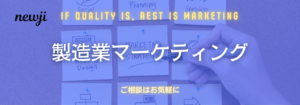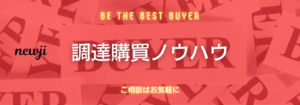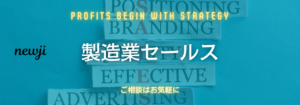- お役立ち記事
- Development and market outlook of wear-resistant lubricants using polymer additives

Development and market outlook of wear-resistant lubricants using polymer additives

目次
Introduction to Wear-Resistant Lubricants
Lubricants play a crucial role in reducing friction and wear between moving surfaces.
With the advancement in technology and the growing demand for high-performance machinery, the development of wear-resistant lubricants has become more significant.
These lubricants are engineered to extend the life of equipment, reduce maintenance costs, and enhance efficiency.
The addition of polymer additives is one of the latest advancements in this area, providing enhanced properties to lubricants.
How Polymer Additives Work
Polymer additives are carefully selected to improve the performance of lubricants.
They offer several benefits, including increased film strength, viscosity enhancement, and temperature stability.
When added to lubricants, polymers create a protective layer on surfaces, minimizing direct metal-to-metal contact.
This layer reduces friction and wear, leading to longer equipment life and reduced downtime.
Types of Polymer Additives
Various polymer additives are used in wear-resistant lubricants, each offering unique benefits:
1. **Viscosity Index Improvers**: These help maintain the lubricant’s viscosity across a range of temperatures, ensuring consistent performance.
2. **Antiwear Agents**: They form a protective film on metal surfaces, reducing wear and extending the lifespan of components.
3. **Extreme Pressure Additives**: Useful in high-load conditions, they provide additional protection by forming a barrier under extreme stress.
4. **Pour Point Depressants**: They prevent the lubricant from thickening at low temperatures, ensuring smooth flow and reduced friction.
Development Process of Wear-Resistant Lubricants
The development of wear-resistant lubricants using polymer additives involves rigorous testing and innovation.
Researchers first identify the specific requirements of the application, such as temperature range, pressure conditions, and environmental factors.
Formulation and Testing
1. **Formulation**: The appropriate polymer additives are selected, and a formulation is developed to meet the desired specifications.
2. **Lab Testing**: Initial samples undergo lab tests to assess properties like viscosity, film strength, and thermal stability.
3. **Field Testing**: Following successful lab tests, the lubricants are tested in real-world conditions to ensure performance under actual operational stresses.
4. **Optimization**: Based on test results, the formula may be refined to enhance certain properties or meet specific industry standards.
Applications of Wear-Resistant Lubricants
The demand for wear-resistant lubricants is growing across various sectors.
Automotive Industry
High-performance engines require lubricants that can withstand extreme temperatures and friction.
Wear-resistant lubricants with polymer additives are ideal for engines, transmissions, and other automotive components.
Manufacturing and Machinery
In industries like manufacturing, equipment operates under heavy loads and high speeds.
The use of such lubricants ensures reduced downtime, lower maintenance costs, and improved efficiency.
Aerospace
Aerospace applications demand lubricants that perform reliably under both high and low-temperature extremes.
Polymer-enhanced lubricants offer the durability needed for aircraft components.
Energy Sector
In the energy sector, whether it’s wind turbines or oil rigs, the equipment often operates in harsh environments.
The use of wear-resistant lubricants ensures these machines continue to operate smoothly and efficiently.
Market Outlook for Wear-Resistant Lubricants
The market for wear-resistant lubricants is poised for significant growth.
Several factors contribute to this positive outlook.
Innovation and Technological Advancements
Ongoing research and development continue to push the boundaries of what wear-resistant lubricants can achieve.
Innovations in polymer chemistry and additive technology are expanding the capabilities of these lubricants.
Increasing Equipment Demand
As industries expand and the demand for high-performance machinery grows, the need for effective lubricants increases.
This demand drives the lubricant market, providing opportunities for further growth and development.
Environmental and Regulatory Factors
With a push towards environmentally friendly and sustainable solutions, wear-resistant lubricants with low environmental impact are gaining traction.
Manufacturers are developing formulations that meet these requirements while maintaining high performance.
Emerging Economies
The growth of industrial sectors in emerging economies presents vast opportunities for the lubricant market.
As these regions industrialize, the demand for wear-resistant lubricants is expected to rise substantially.
Conclusion
The development of wear-resistant lubricants using polymer additives represents a significant advancement in lubricant technology.
These products offer enhanced protection, efficiency, and longevity for various applications.
With ongoing research, innovation, and a strong market demand, the future for wear-resistant lubricants looks promising.
As industries seek to optimize performance and reduce costs, the role of advanced lubricants will become increasingly vital.
 資料ダウンロード
資料ダウンロード
QCD管理受発注クラウド「newji」は、受発注部門で必要なQCD管理全てを備えた、現場特化型兼クラウド型の今世紀最高の受発注管理システムとなります。
 NEWJI DX
NEWJI DX
製造業に特化したデジタルトランスフォーメーション(DX)の実現を目指す請負開発型のコンサルティングサービスです。AI、iPaaS、および先端の技術を駆使して、製造プロセスの効率化、業務効率化、チームワーク強化、コスト削減、品質向上を実現します。このサービスは、製造業の課題を深く理解し、それに対する最適なデジタルソリューションを提供することで、企業が持続的な成長とイノベーションを達成できるようサポートします。
 製造業ニュース解説
製造業ニュース解説
製造業、主に購買・調達部門にお勤めの方々に向けた情報を配信しております。
新任の方やベテランの方、管理職を対象とした幅広いコンテンツをご用意しております。
 お問い合わせ
お問い合わせ
コストダウンが利益に直結する術だと理解していても、なかなか前に進めることができない状況。そんな時は、newjiのコストダウン自動化機能で大きく利益貢献しよう!
(β版非公開)




